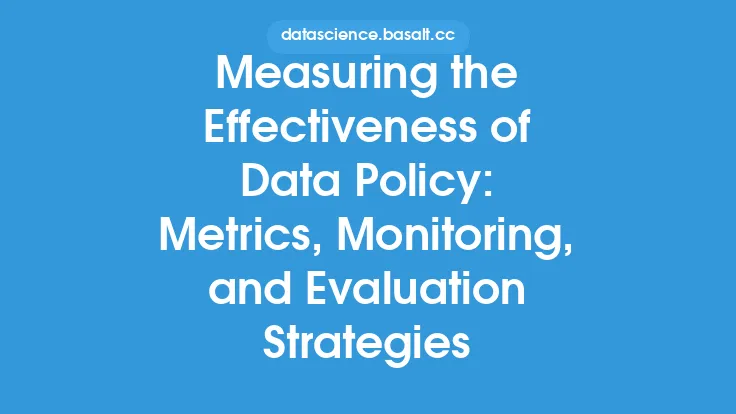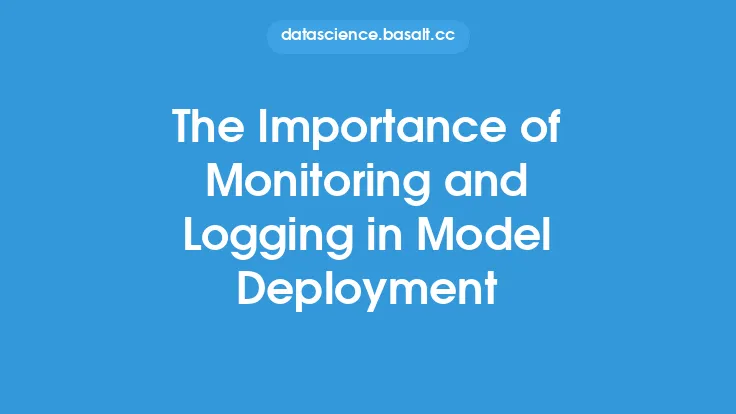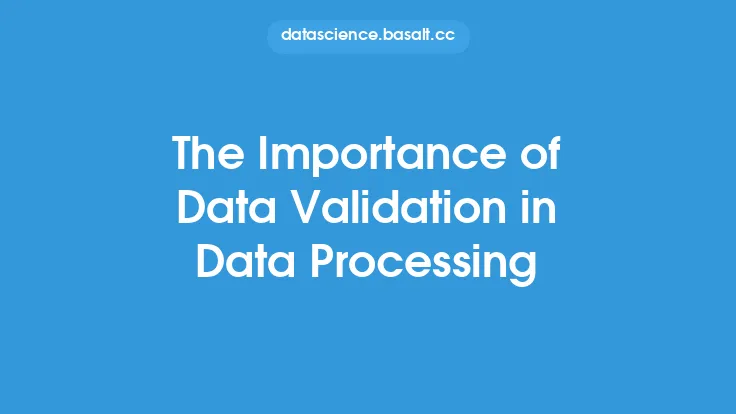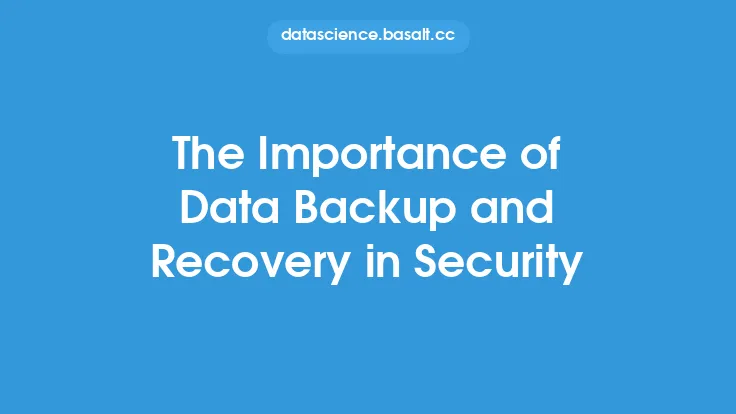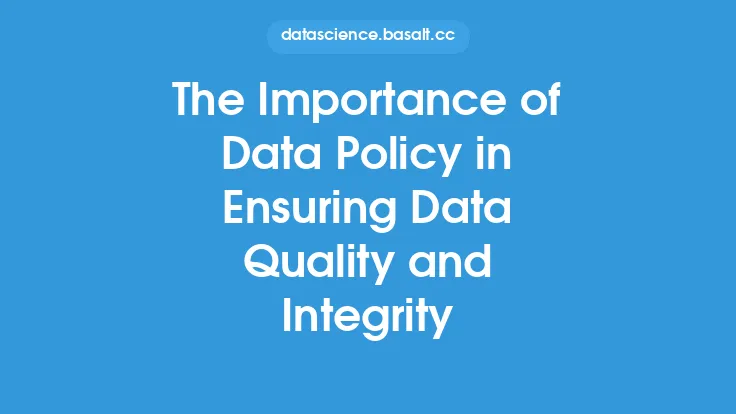Data pipeline monitoring and alerting are crucial components of data pipeline management, playing a vital role in ensuring the reliability, efficiency, and accuracy of data workflows. As data volumes continue to grow and become increasingly complex, the need for effective monitoring and alerting systems has never been more pressing. In this article, we will delve into the importance of data pipeline monitoring and alerting, exploring the benefits, challenges, and best practices associated with these critical processes.
Introduction to Data Pipeline Monitoring
Data pipeline monitoring involves the real-time tracking and analysis of data as it flows through the pipeline, from ingestion to processing, transformation, and storage. This process enables data engineers and operators to identify potential issues, detect anomalies, and troubleshoot problems before they escalate into major incidents. Effective monitoring requires a deep understanding of the data pipeline architecture, including the various components, dependencies, and data flows. By leveraging monitoring tools and techniques, teams can gain visibility into the pipeline's performance, data quality, and system health, allowing for prompt intervention and corrective action.
The Role of Alerting in Data Pipelines
Alerting is a critical component of data pipeline monitoring, providing timely notifications when issues arise or predefined thresholds are exceeded. Alerting systems can be configured to trigger notifications based on various criteria, such as data volume, processing latency, error rates, or data quality metrics. These notifications can be sent to relevant stakeholders, including data engineers, operators, and business users, ensuring that everyone is informed and empowered to take action. The primary goal of alerting is to minimize downtime, reduce data loss, and prevent errors from propagating through the pipeline, ultimately protecting the integrity and reliability of the data.
Benefits of Data Pipeline Monitoring and Alerting
The benefits of data pipeline monitoring and alerting are numerous and significant. Some of the most notable advantages include:
- Improved data quality: By detecting anomalies and errors early, teams can prevent data corruption and ensure that high-quality data is delivered to downstream systems and users.
- Increased uptime: Proactive monitoring and alerting enable teams to identify potential issues before they cause downtime, reducing the likelihood of pipeline failures and data loss.
- Enhanced collaboration: Alerting systems can facilitate communication and collaboration among teams, ensuring that everyone is aware of issues and working together to resolve them.
- Faster troubleshooting: With real-time monitoring and alerting, teams can quickly identify the root cause of issues, reducing the time and effort required for troubleshooting and resolution.
- Better decision-making: By providing accurate and timely insights into pipeline performance and data quality, monitoring and alerting systems can inform business decisions and drive data-driven strategies.
Challenges and Complexity in Data Pipeline Monitoring
Despite the importance of data pipeline monitoring and alerting, several challenges and complexities can arise. Some of the most significant hurdles include:
- Scalability: As data volumes and pipeline complexity grow, monitoring and alerting systems must be able to scale to handle the increased load, without introducing additional latency or overhead.
- Noise reduction: With the vast amounts of data and metrics generated by modern data pipelines, it can be challenging to filter out noise and identify meaningful signals, requiring advanced analytics and machine learning techniques.
- Alert fatigue: If alerting systems are not properly configured, teams may experience alert fatigue, where the sheer volume of notifications becomes overwhelming, leading to desensitization and decreased responsiveness.
- Integration: Monitoring and alerting systems must be integrated with existing pipeline components, tools, and workflows, requiring careful planning, design, and implementation.
Best Practices for Data Pipeline Monitoring and Alerting
To overcome the challenges and complexities associated with data pipeline monitoring and alerting, teams can adopt several best practices, including:
- Implementing a centralized monitoring platform, providing a single pane of glass for pipeline visibility and control.
- Defining clear, actionable alerts, with well-defined thresholds and notification criteria.
- Leveraging automation and machine learning, to reduce noise, improve signal detection, and optimize alerting workflows.
- Establishing a culture of collaboration, ensuring that teams are aware of issues, and empowered to take action.
- Continuously monitoring and evaluating pipeline performance, identifying areas for improvement, and refining monitoring and alerting strategies accordingly.
Technical Considerations for Data Pipeline Monitoring
From a technical perspective, data pipeline monitoring and alerting require a range of tools, technologies, and techniques. Some of the most popular monitoring tools include:
- Prometheus, Grafana, and Alertmanager, for metrics collection, visualization, and alerting.
- Apache Airflow, for workflow management, monitoring, and alerting.
- New Relic, Datadog, and Splunk, for application performance monitoring, logging, and analytics.
- Apache Kafka, Apache Storm, and Apache Flink, for stream processing, event-driven architectures, and real-time analytics.
When selecting monitoring tools and technologies, teams should consider factors such as scalability, flexibility, and integration, ensuring that the chosen solutions align with the pipeline's architecture, performance, and reliability requirements.
Conclusion
In conclusion, data pipeline monitoring and alerting are essential components of data pipeline management, providing the visibility, control, and agility required to ensure reliable, efficient, and accurate data workflows. By understanding the benefits, challenges, and best practices associated with these critical processes, teams can design and implement effective monitoring and alerting systems, protecting the integrity and reliability of their data, and driving business success through data-driven decision-making. As data volumes continue to grow and pipeline complexity increases, the importance of data pipeline monitoring and alerting will only continue to escalate, making it a vital area of focus for data engineers, operators, and business leaders alike.
